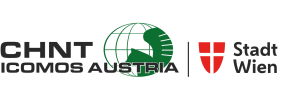Digital Religioscapes of Cavernous Mountains – New Ways Ahead in Speleo-Archaeology
Recent applications of photogrammetry and terrestrial laser scannings in the Franconian Jura and the Pontic Mountains provided new insights into subterranean ritual landscapes, particularly their ecological features and artificial installations, through three-dimensional documentation of stepped tunnels and natural vertical caves. As these applications, which aim for high-resolution digitalisation of sacr(alis)ed places, exemplify, digital archaeology offers exciting prospects for revealing the unilluminated: underground shrines cut into the bedrock, sequences of ritual practices of past communities and hitherto unseen cult facilities carved from the rock. In combination with radiocarbon dating, zooarchaeological and osteological analyses, 3D digitization enables an integrated socio-spatial approach for reconstructing detailed sequences, e.g., of the deposition of ritual assemblages.
In our session we discuss new ways to document, visualize and investigate invisible ritual landscapes and their built environments through the digitalisation of underground structures and the location of finds. We thus invite contributions presenting case studies applying digital approaches at cavernous sites and current methodologies including cutting-edge technologies that are particularly suitable to explore:
- religious and settlement activites of cave-dwelling communities
- rock art and architecture as features of sacr(alis)ed landscapes
- rock-cut tombs and burial assemblages of grave goods deposited in rocky environments
- ritual activities performed in caves, e.g. the deposition of human/animal remains and votive offerings
What kind of digital technology is applicable and appropriate to the creation of digital religioscapes under specific ecological circumstances?
How can digital approaches support us in rendering sensorial experiences and reconstructing religious practices of past communities?
Interested in discussing new ways ahead? Join our upcoming session in Vienna!
authors:
Julia M. Koch- University of Giessen, Institute of Classics, Department of Classical Archaeology
Timo Seregély- University of Bamberg, Institute for Archaeology, Heritage Conservation Studies and Art History, Department of Prehistoric and Protohistoric Archaeology
Rainer M. Czichon- University of Uşak, Faculty of Humanities and Social Sciences, Department of Archaeology
Entry to the cave
Floor plan and 3D recording of the cave





